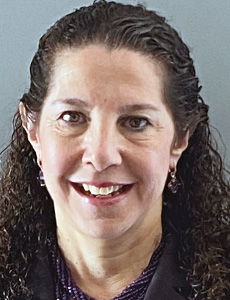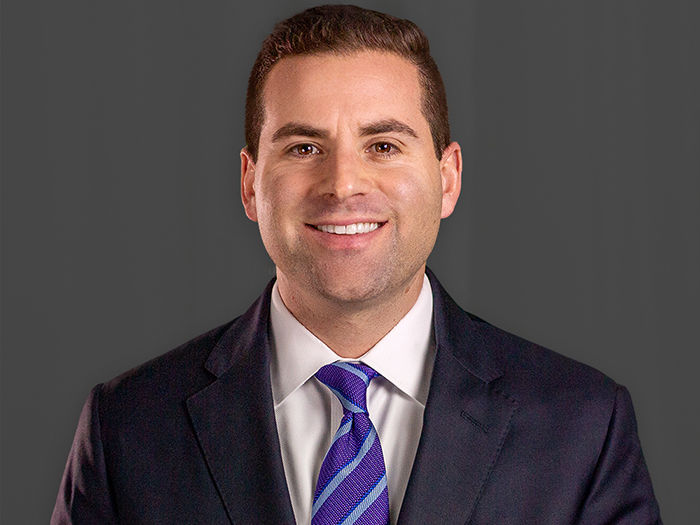The Gavel Keeps Falling and General Liability Is in the Crosshairs. The Latest on Litigation Funding and Social Inflation

The general liability market has changed beyond recognition since the start of the COVID-19 pandemic.
Ever-increasing economic and social inflation, medical expenses and litigation financing have all resulted in spiraling claim losses and legal costs, which continue to outstrip rates. Added to that, sexual harassment cases are on the rise, and decades-old general liability policies have been exposed as many states have removed limitations on financial recovery and victims have been given more time to file or proceed with claims.
The emergence of new potential risks such as cannabis, herbicide and pesticide use over multiple decades, nutraceuticals, PFAS or “forever chemicals,” contaminated drinking water and the impact of 5G technology on flight safety have also raised the specter of large-scale class action lawsuits, fueled by growing anti-corporate sentiment, mistrust and social polarization.
Insurers have been further hampered by post-pandemic uncertainties over workplace liability exposures and litigation and prolonged low interest rates constraining their investment returns.
“A.M. Best’s expectation for a modest decline in underwriting performance in 2022 assumes a return to pre-pandemic economic and litigation activity, as well as further increases in jury verdicts,” A.M. Best concluded in its latest general liability market segment report.
“Employer liability exposures will merit close monitoring, as expectations are that employees will return to traditional workplaces at an accelerating pace in the third year of the pandemic.
“Furthermore, because so many cases were put on hold in 2020 and early 2021, the pace of attorney advertising and reactivation of the court proceedings has increased substantially.”
Despite rates moderating to mid-single digit increases, the surge in nuclear verdicts and unsustainable loss accumulations have brought about a sea of change in the market over the last two years. The biggest issue has been finding sufficient capacity to build insurance towers to cover these new exposures. That has meant brokers and insurers have had to work closer together to craft coverage that meets clients’ needs.
Insureds have also been increasingly turning to alternative forms of insurance such as captives to secure cover.
Nuclear Jury Verdicts
Social inflation and nuclear jury verdicts with settlements totaling tens of millions of dollars have been the biggest challenges for insurers, and they show no signs of abating, said Carol Laufer, North America head of liability at Allianz Global Corporate and Specialty.
On top of that is medical cost inflation, which has increased exponentially in recent years, she said.

Carol Laufer, North America head of liability, Allianz Global Corporate and Specialty
“Plaintiff attorneys are also becoming increasingly sophisticated in their tactics,” said Laufer. “It has become a vicious cycle where claims are brought, they go to trial and a large award is made, and then it starts all over again with another claimant.”
Among the most common cases brought are around mass shootings in retail stores and hotels, sexual abuse and molestations at universities and colleges, traumatic brain injuries, multivehicle accidents, building collapses, wildfires and biometric data collection. With 50 firms that specialize in litigation funding, the likelihood is that these types of claims are only going to increase.
Insurers have responded by raising premiums to at least cover average claims inflation of 8 to 10%, with the largest increases in excess casualty and umbrella coverage, and by tightening terms and conditions.
A host of policy exclusions have subsequently been introduced, including for sexual abuse, COVID-19 and territories, particularly for companies with exposures in Russia and Belarus, in the wake of the war in Ukraine.
Capacity Halved
Laufer said capacity has halved for some insurance towers, from $1 billion before 2019 to $500,000 today, leaving significant gaps and forcing insureds to take larger retentions, particularly in the primary layer. Despite some new capacity coming in, as jury awards continue to increase, it will shrink or exit the market altogether as providers’ risk appetite diminishes.
“Previously, insureds could go out and get $25 million in coverage, or even $50 million or more, in some cases,” said Donnacha Smyth, president of excess casualty, Americas for AXA XL. “Now, they are having to build insurance towers with smaller chunks such as $5m, $10m from multiple different carriers and even, in many instances, quota sharing, to reach the total amount they need.”
Despite the reduced capacity, insureds still need to secure higher limits to protect themselves against these exposures, prompting many to turn to the excess market, said Erich Bublitz, senior vice president and head of excess and surplus at AmTrust Financial Services.
They also must ensure they have the right coverage in place, after many were forced to change their business models due to the pandemic, he said.
“The brokers are having to have many difficult conversations with their insureds about the need for additional limits to build larger towers,” said Bublitz. “It’s a real balancing act between securing the required amount of limits at the best possible price.”
Insureds’ CFOs and treasurers are also working more closely with their brokers and underwriters to understand the insurance process better and get comfortable with the risk, said Smyth.

Donnacha Smyth, president of excess casualty, North America, AXA XL
Despite being able to communicate electronically during the pandemic in order to do so, however, he said nothing can replace in-person interaction.
“As we move out of the pandemic, brokers and insurers need to rebuild that personal interaction through face-to-face meetings once again,” said Smyth. “That will ensure everyone gets better outcomes, with the insureds telling their story fully and as a result, the underwriters wanting to do business with them.”
Stephen Hackenburg, Aon’s U.S. national casualty practice leader, added: “Insureds need to be fully transparent and provide as much relevant information as possible for the insurer to be able to address their coverage needs. Getting out early ahead of the renewal cycle is also hugely beneficial when it comes to securing appropriate cover.”
Data Access
Brokers and insurers are also getting greater access to data and predictive analytics, enabling them to make more informed decisions. Underwriters, too, can benefit by focusing on specific subsets of the market, said Ashley Moffatt, vice president, brokerage — primary casualty at Nationwide.
“The players that will be most successful are those that take an industry vertical approach, focused on a specific area where they are true experts, such as excess auto, construction and product manufacturing,” she said. “Data and technology will enable them to gain a deeper insight to assist with this.”
In addition, corporations, which tend to incur larger jury verdicts and settlements, are increasingly taking on more of their own risk and turning to captives, self-insurance and quota sharing. They are also adopting assigned risk pools, particularly for large transportation firms, to bridge the gap between primary and excess casualty premiums.
But it’s a collaborative approach between insureds, their brokers and insurers that will yield the best results. That means leveraging some of the tools which have proved so successful during the pandemic.
“The partnership between brokers and risk managers remains central to a successful and efficient general liability program,” said Liz Larsen, vice president at CAC Specialty. “With risks evolving in the physical and digital world, communication with not only these two partners, but those in claims can help detect potential lapses in coverage before losses occur.
“Clients have become more visible to underwriters during the pandemic, joining negotiations and giving presentations on operations, risk management and safety advances as Zoom/Teams becomes a part of our daily lives.” &










